GAT 032 Heman Chong
Infrastructure and other Stories
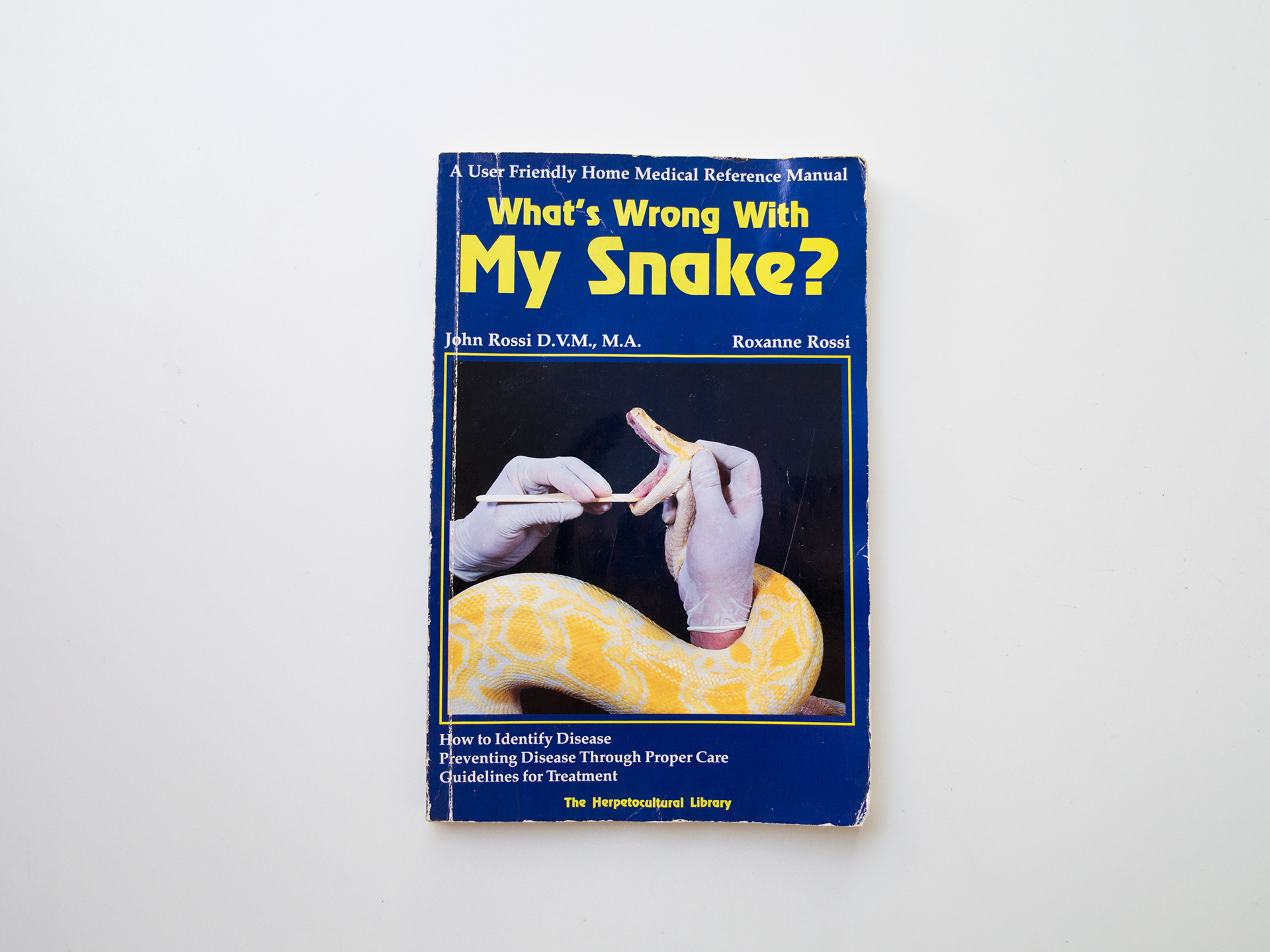
Based in Singapore, Heman Chong is involving in a variety of activities. Chong’s cross-disciplinary works, which use even the novel writing as a medium, take on a completely different aspect depending on how they are told. The following is an excerpt from a talk held on January 12, 2022.
Edited by Ishii Jun’ichiro (ICA Kyoto)
For the past 20 years I have been existing as an artist working in a relatively dispersed manner; I don’t believe in developing any form of fixed identity or signature, and I would often employ different methods of production across different projects. In a way, you can say that it is almost impossible to think about my practice as one thing but a stack of different things.
Within this dynamic incompleteness, I have identified 4 threads that I would like to talk about today. They are : How to live, Chance, Infrastructure, and Fictions.
* Although Heman Chong gave a talk with two examples for each thread, due to space reasons, unfortunately, we will not be able to present in this article.
Part 1 : How to live
We are surrounded by things that are made of paper. So much of our lives are mediated via paper documents, paper packaging, books, waste. Within the realm of art and culture, our relationship to paper revolves around inscribing on paper words and images, and later on, learning how to preserve these and conserve them for a future generation.
My interest in paper began early on in my life, in my other life as a graphic designer. For graphic designers, the very concept of paper is quite different from that of artists. Well, at least for me, there is always that possibility of touch. And that intimacy with paper is something that I’ve always been obsessed with since the very beginning of my life as an artist.

« The Library of Unread Books (2016) » NTU CCA, Singapore
The project I want to talk about deals with paper as material but is not immediately apparent because of all the layers of complexities involved within the project. But at the heart of the work is a collection of 3,000 books, which as we all know, are made from paper.
« The Library of Unread Books » is an artist run space functioning as a temporary public library. It is run by Renée Staal and I and we started it back in 2016 in Singapore at NTU CCA, during a residency.
Each book in « The Library of Unread Books » was previously owned as private property and someone has decided to give up that exclusive status with the book and donate it into a common pool.
Our cheesy motto is : If you have a book you haven’t read, donate it to us, and someone else will read it for you.
The books in our collection should be touched, smelt and of course, read. There is no system of arranging the books. They are stacked on top of each other, and placed on tables.
It is also important for us that the furniture used in the library are also furniture that should be found within the institution and recycled to host the books and the readers. If we need chairs and tables, they should be bought from a second hand store.
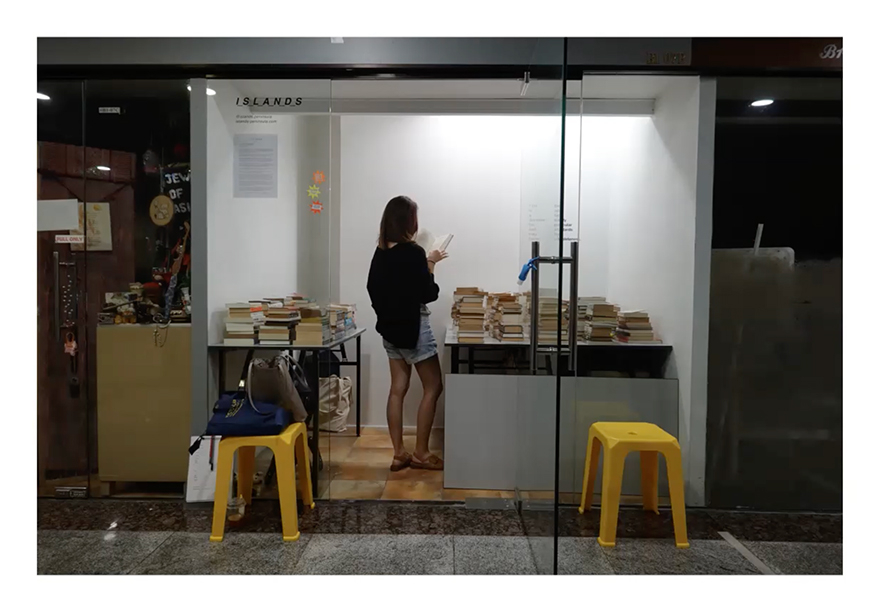
« The Library of Unread Books (2016) » NTU CCA, Singapore
This library is constantly re-arranged by the readers. We are precious about our collection as a sharing of ideas and spaces. We are not precious about the books as physical or cultural commodity. If a book is stolen, then it still remains a book from our library, only that it is sitting on someone’s else shelf.
If a book collapses from use, we will repair it until it cannot be read any longer and we will recycle it. We insist that our library functions like a epiphyte that grows on the surfaces of other institutions. We hope that it will seduce these institutions into dreaming of producing common space for people to gather, common tools for people to utilise, and ways of working that doesn’t exhaust common resources, and in turn exhaust the possibility of community.
Part 2 : Chance
« Away now from physical debris, we move onto a site of digital debris. »
This is a performance which has an absurdist claim. It claims to contain everything. Just as Wikipedia claims to encapsulate all of human knowledge.
The performer begins by accessing Wikipedia live on their mobile phone. They head to the ‘Article of the Day’ and begins to read the entire page before moving onto the next by clicking on a link of their choice.
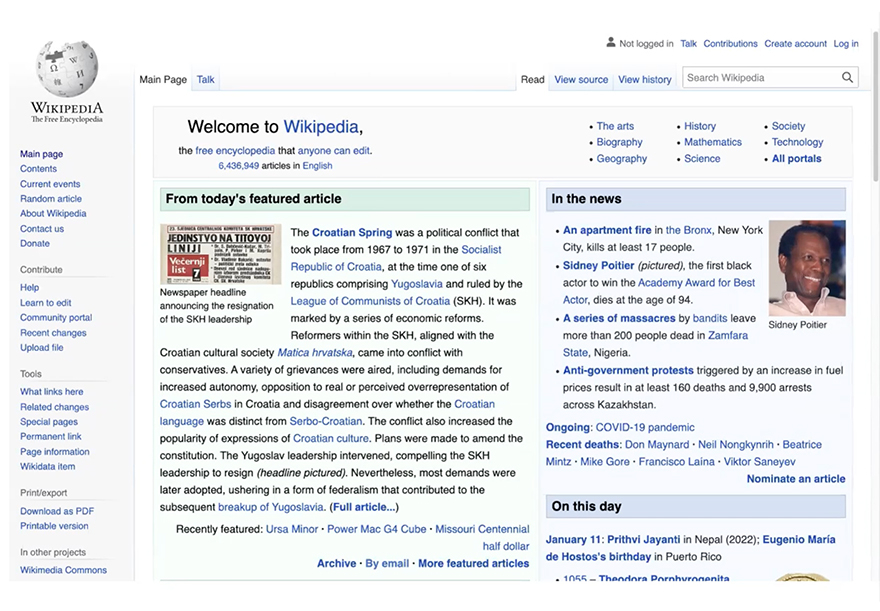
« Away now from physical debris, we move onto a site of digital debris. (2016) » Rockbund Art Museum, Shanghai
This performer performs for an hour before another performer takes over. It’s important for me that a lot of care is given to the individuals who perform my work.
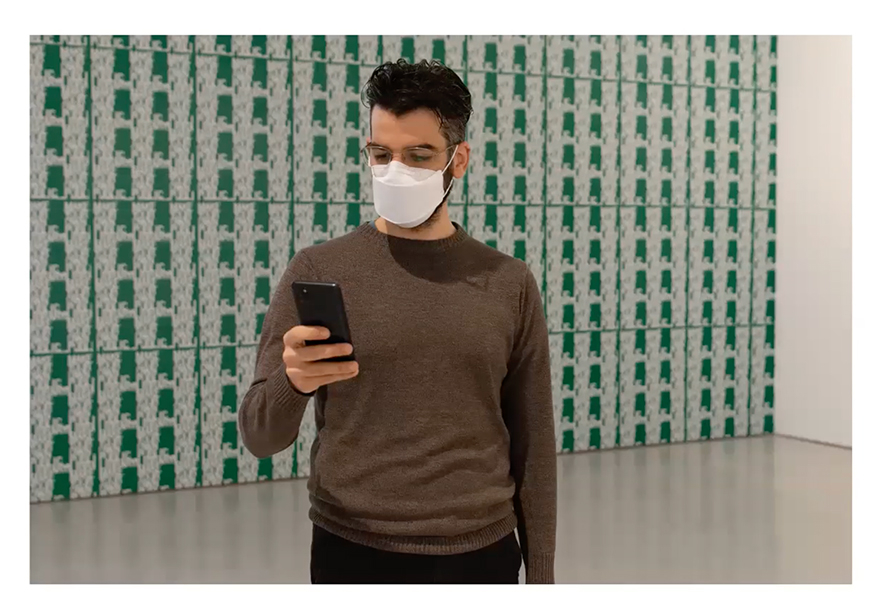
« Away now from physical debris, we move onto a site of digital debris. (2016) » Rockbund Art Museum, Shanghai
I made this work for my solo show at the Rockbund Art Museum in Shanghai back in 2016. The work was originally performed in Mandarin and because we couldn’t access Wikipedia in China, this first staging utilised Baike, an online encyclopaedia produced by Baidu, which is more or less China’s Google.
This perform is different every time it is performed because the Article of the Day on Wikipedia shifts. There will never be a repeat of the content on any given day. Everything that you experienced in this work is produced by chance.
A lot of my performances involve speech and language. I am interested in appropriating ways of communication and interaction as a way of creating ways of moving beyond image making.
Part 3 : Infrastructure
What is infrastructure?
Infrastructure is essentially made up of the components of the built world around us. It is mostly in reference to stuff found in public space. Things like roads, highways, lifts, buildings, fire escapes, buses and reservoirs.
I am deeply interested in systems that surround us that are not immediately apparent or visible to the naked eye. These secrets within our infrastructure are cracks and slippages that are placed there in order to facilitate informal exchanges that are sometimes not possible to stage because of bureaucracy or just petty politics.
This work is a sign that is installed by my local council of the estate where I live in Singapore.
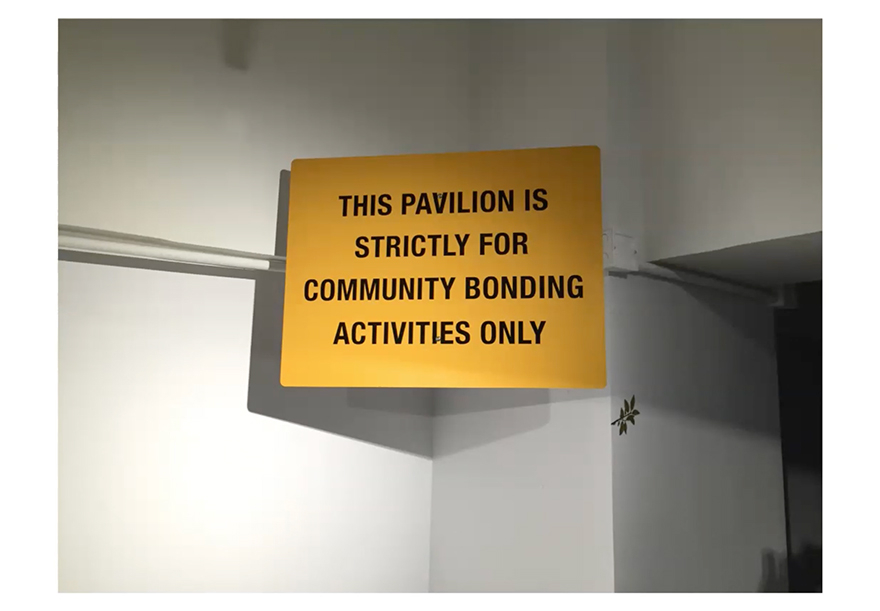
« This pavilion is strictly for community bonding activities only »
It is absolutely the most fascist thing I’ve ever read on a sign.
« This pavilion is strictly for community bonding activities only »
I hate it so much that I love it and I have decided to appropriate it as one of my works.
It is infrastructure at it’s most revealing, most cruel and most absurd state.
This is the opposite of everything that I believe in. I don’t want ever want to tell people how to think, how to look at my work, what to do with my work.
I often choose to install it within exhibitions that often speak about ideas behind community and relations.
People often find this extremely shocking. And I do agree with them.
Part 4 : Fictions
Let’s talk about the idea of fiction. What is fiction? What roles do story-telling play in our society? How does it affect our individual lives?
I have always been interested in law and how we interpret what something is legal or not. In fact, legality is a kind of fiction. A bunch of people in power wrote the rules. Rules that define how we live.
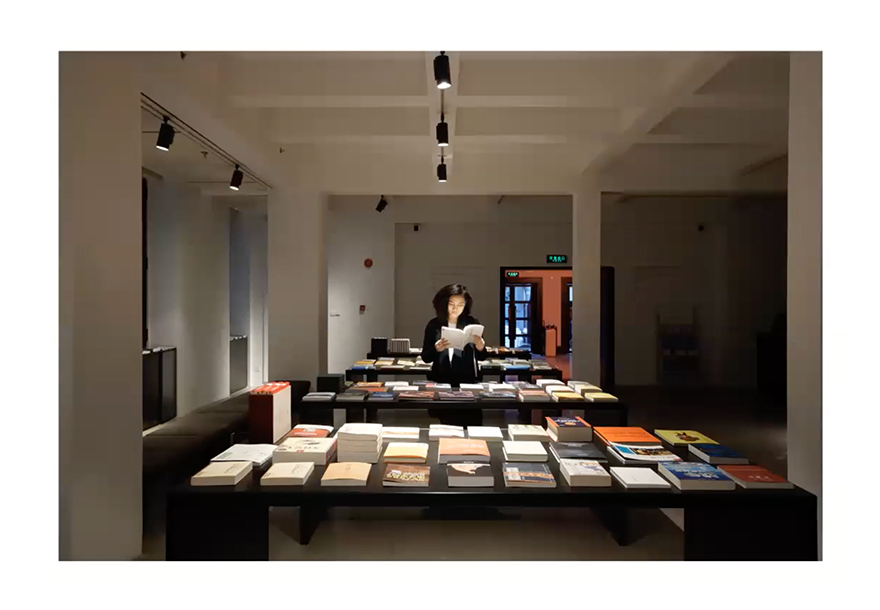
« Legal Bookshop (2018) »
« Legal Bookshop » is a collaboration with sci-fi writer and lawyer Ken Liu that sells books from a list he has compiled regarding the idea of the law.
It is a non-profit bookshop. We are selling the books for the price we bought them. This is only possible within art project. It’s the worst business model ever.
A temporary bookshop that disappears after the exhibition is also a kind of fictional space. In a way, this bookshop is about staging Ken’s side of what he thinks what the law means to him.
It’s super interesting to be able to access his mind via this library that he has created. In a way, our collaboration is also a fiction, just as all relationships are. A social contract.
Some of his choices are very obvious. I totally expected John Grisham but I did NOT expect Susan Sontag’s On Photography… but if you think about it, the processes of executing the law depends so much on photography as evidence… So this makes sense.
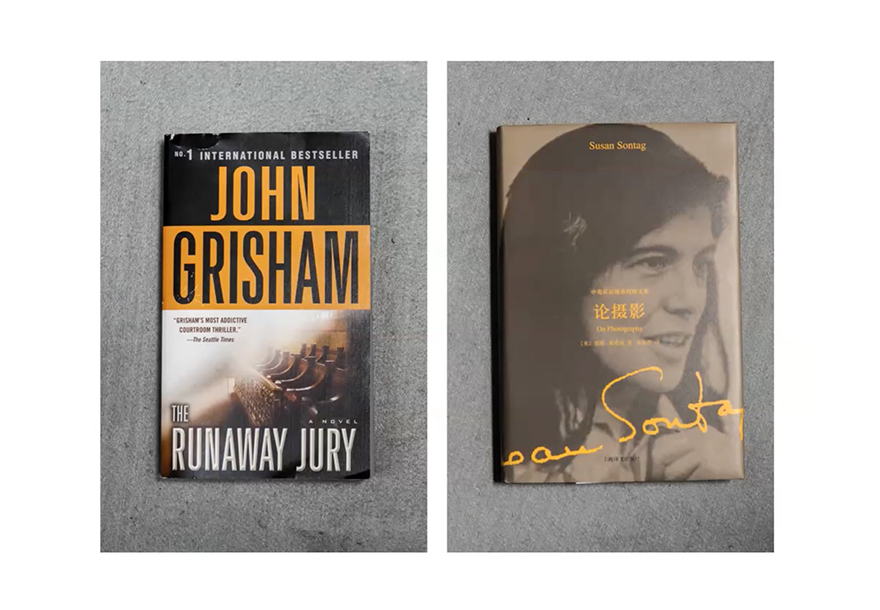
« Legal Bookshop (2018) »
There’s a lot of science fiction sold in the bookshop, which is not surprising because Ken Liu translates a lot of sci-fi texts, including The Three Body Problem by Liu Cixin.

« Legal Bookshop (2018) »
In a way, a politician’s manifesto is a kind of fiction too.
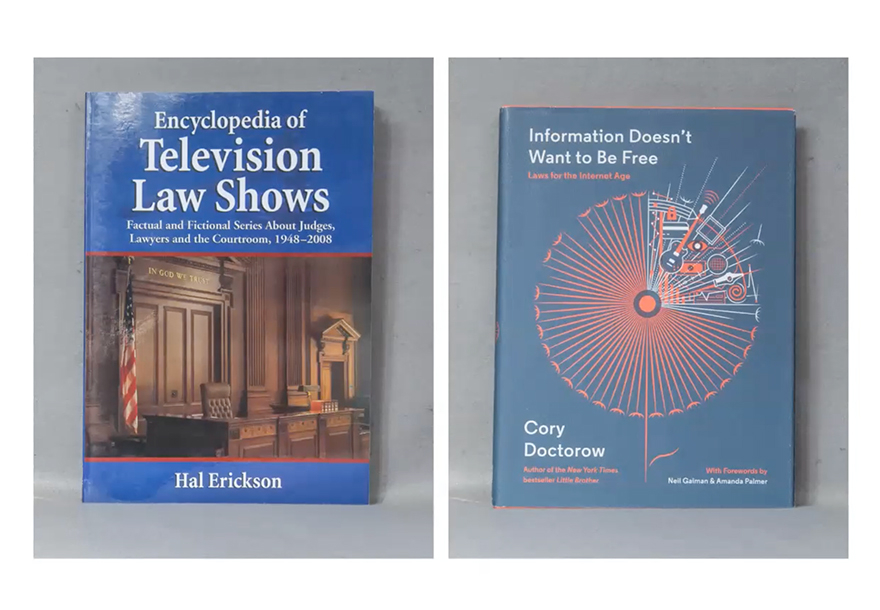
« Legal Bookshop (2018) »
Lists of law shows. Expected.
Copy-left books. Yes.
Heman Chong
Heman Chong is an artist whose work is located at the intersection between image, performance, situations and writing. His practice can be read as an imagining, interrogation and sometimes intervention into infrastructure as an everyday medium of politics. His work has been the subject of solo exhibitions at STPI, Het Nieuwe Instituut, Weserburg Museum, Jameel Arts Center, Swiss Institute New York, Art in General, Artsonje Center, Rockbund Art Museum, South London Gallery, NUS Museum, amongst many others. Chong is the co-director and founder (with Renée Staal) of The Library of Unread Books, a library made up of donated books previously unread by their owners.
* This talk was held online on January 12, 2022.